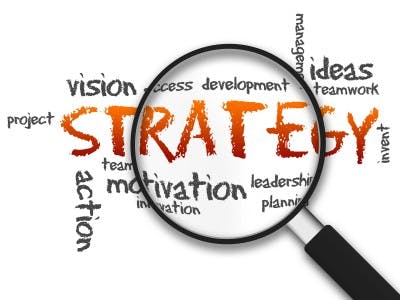In HR we have to have a strategy for everything.
What’s your employment brand strategy? What’s your orientation strategy? What’s your open enrollment strategy? It’s not really strategies for most of these – they’re processes – but we get hit over the head so many times in HR we stopped calling our processes “processes” — and started calling our “processes” “strategies.”
It makes us feel strategic when we have strategies!
A plan of action isn’t a strategy
Unfortunately, it’s rare that I see a real strategy for an organization’s talent – their people. We strategically have many strategies in HR: our strategic benefits strategy, our compensation strategy, our recruitment strategy, etc. These really aren’t strategies, either. These are more what I call HR operational initiatives, or the crap we do on a daily basis.
It’s our job. It’s not strategy.
What is strategy? It’s a plan of action designed to achieve a vision.
We do really well on the plan of action! We usually fail on the last part – achieving a vision – because usually we really don’t have a vision, unless you consider doing the job a vision!
It’s not. The vision part of your strategy is by far the most important part. It needs to connect to the hearts and minds of your HR group. They need to truly believe in it, because it will shape decision making at all levels in your department – or at least it should!
Elements that should be in your strategy
Your HR strategy needs to speak to what you truly believe on the people side of your business. It’s all right if your strategy and your current reality are not yet at the same point, because you need to have a vision to be able to reach it.
Very few organizations design their strategy based on their current state – unless they’ve already reached that pinnacle of excellence they desire. Too often, I see HR departments go to design an HR strategy, and it breaks down because people try and throw reality into the mix. “Wait, this isn’t who “we” are – we aren’t what you are saying…”
I love realists, but they usually aren’t the best ones to draft your HR strategy! You obviously need reality in your strategy, but not so much that you just regurgitate your current state.
I can’t tell you what your HR strategy should be, but I can tell you some elements that better be a part of it:
- The level of talent you need to achieve your organizational strategy;
- The type of talent you need to achieve your organizational strategy;
- The personality traits your talent will need to be successful in your organization.
Fact: we all need great talent
Not every organization needs high energy, go-getter, experienced individuals to be successful, but some do. Others need calm, mild-mannered, entry level people to be successful. Many organizations need a large mix of talent, traits and experiences (heck, most of us do!). In the end, we all need great talent that cares about their personal outcomes, cares about organizational outcomes, and believes that both of those things can be accomplished under our roof.
Lastly, make your HR strategy simple – so simple everyone in the building can spout it off in under five (5) seconds. That will be hard to do, but that will make your strategy lasting and effective.
This was originally published on Tim Sackett’s blog, The Tim Sackett Project.
